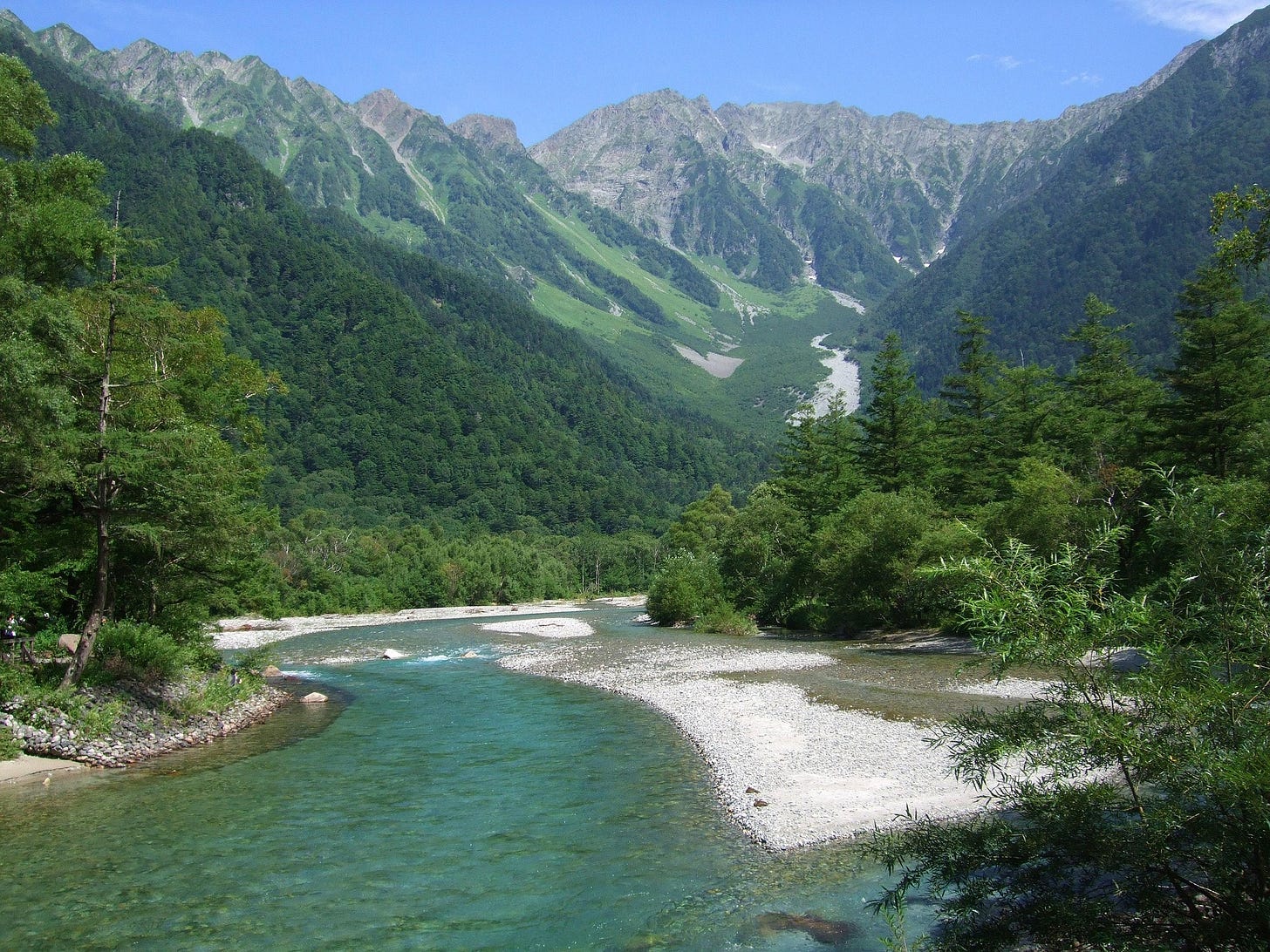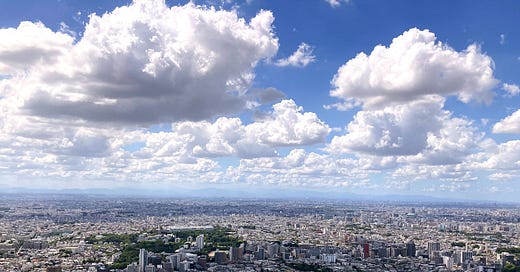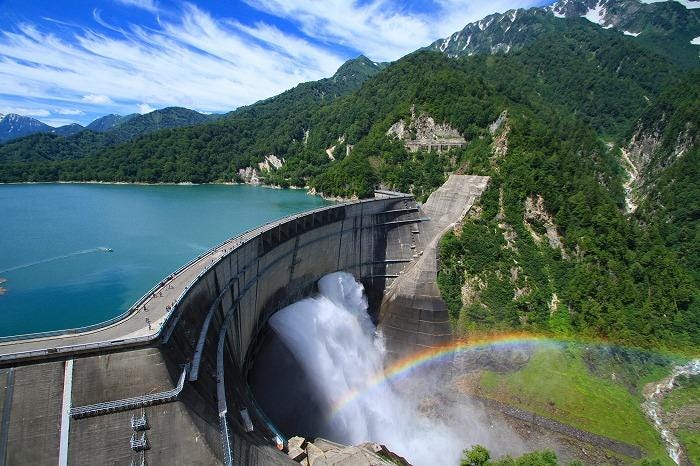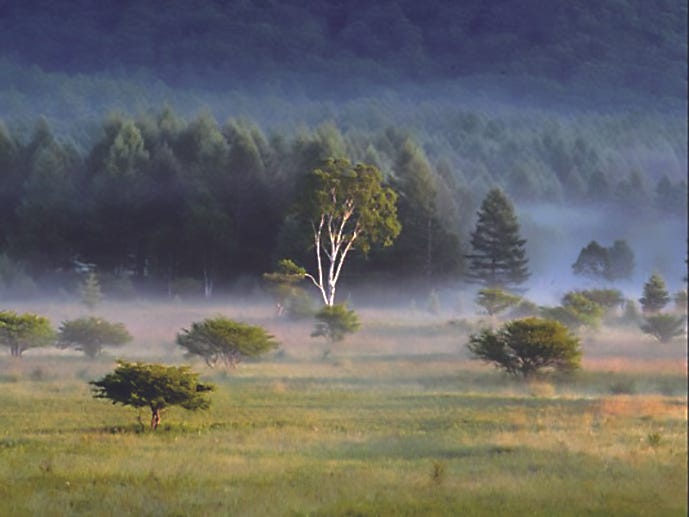#155 Summer Heat in Japan
Tips for surviving this year's hot Japanese summer and travel safely.
On Tuesday, June 24, the weather in Tokyo was cloudy, with occasional rain, at a high of 29 degrees Celsius. Despite the rainy season in June, it has been the eighth consecutive day that temperatures in Tokyo exceeded 30 degrees Celsius, and it doesn’t seem to be typical rainy season weather. Typically, concerns about extreme heat arise after the rainy season ends, but we will need to worry about the heat again this summer. Last year, the number of foreign tourists visiting Japan slightly declined in August. While a similar decline is expected this year, foreign tourists will continue to flock to regions across Japan at a high level. Those planning to visit Japan during the summer should make the necessary preparations. This week, I will discuss how to cope with the heat in Japan.
Characteristics of Japanese Summer
Since climate change became a topic of concern, Japanese summers have become increasingly hotter yearly. Two years ago, I wrote a post on how to survive the heat(#62). This time, based on recent trends in summer temperatures in Tokyo, I would like to share with you what you need to keep in mind if you plan to travel during this season.
The Japan Meteorological Agency announced its medium-range forecast for the next three months. Focusing solely on temperatures, they expect to remain higher than average overall. Japanese summers are characterized by high temperatures and humidity, often exceeding 75%, with August typically being the most humid month.
Intense sunlight and humidity are the two leading causes of heatstroke. In Japan, due to the high humidity, even cloudy days without direct sunlight can lead to heatstroke, so visitors not accustomed to this environment should take precautions, such as drinking plenty of fluids.
Mid-term Forecast
According to the mid-term forecast for the next three months announced by the Japan Meteorological Agency on June 24, the Pacific and Tibetan high-pressure systems will extend strongly to the north, causing temperatures nationwide to exceed the average for this time of year, resulting in extreme heat. The intense heat is expected to continue even in September.
Hot Spots on the Golden Route
Looking at Japan's classic Golden Route for sightseeing, most places are hot in summer. Starting from Tokyo, the gateway to Japan, and continuing to Kyoto, Osaka, and Hiroshima, these cities will likely experience intense heat in midsummer. In that sense, heat countermeasures are unavoidable for those visiting Japan for the first time in the summer.
On the other hand, it might be a good opportunity for repeat visitors to explore areas outside the Golden Route. As mentioned later, high-altitude summer resorts, especially those immersed in nature, might be ideal for those who enjoy being surrounded by nature.
Heatstroke Prevention
・Hydration: The most critical measure is to drink water frequently. Once you feel thirsty, it is too late, so drink water regularly.
・Clothing: Choose clothing that is breathable, quick-drying, and absorbent. In Japan, air conditioning can be too intense in trains and stores, so it is a good idea to bring something to wear over your clothes for such situations.
• Mineral Intake: Even when sightseeing in Tokyo, you may be exposed to the sun for extended periods. Mineral-rich candies, which focus on salt intake, are available for purchase, so it is advisable to keep some on hand.
• Avoiding Direct Sunlight: Major train stations often have well-developed underground passages. Even if it means taking a slight detour, using air-conditioned underground passages is another effective heat countermeasure.
Dates and Locations to Avoid
・As mentioned earlier, cities along the Golden Route tend to get very hot. Kyoto, in particular, is located in a basin, so it often gets extremely hot in the summer. The first thing to consider is the time of day you will travel. Try to travel in the early morning or evening when the temperature is lower, and take advantage of the shade of trees in gardens during the daytime when the temperature peaks.
• From July to late August, which coincides with after the end of the rainy season, there is a high probability of sunny weather accompanied by high temperatures. Additionally, days with maximum temperatures exceeding 30°C have become common recently, even in September. Therefore, careful scheduling is essential for a comfortable trip.
My Top Picks for Cool Day Trips
If you have no choice but to visit Japan in the middle of summer, there are ways to escape the heat. Avoid urban areas and head to "summer resorts" at higher altitudes. Japan has many summer resorts where people can escape the heat. Japanese people also avoid the heat by heading to these crowded places, so it's a good idea to target them.
Karuizawa: Located at over 1,000 meters, the temperature stays around 20 degrees Celsius even in the middle of summer, making it a comfortable place to visit. Additionally, it has developed as a summer resort over the years, and its stylish streetscape contributes to its enduring popularity. Its proximity to Tokyo, just a one-hour ride by bullet train, is also a significant draw.
Kamikochi: Here, you can forget the hustle and bustle of the city while enjoying views of 3,000-meter peaks and transparent, clear streams.

Kamikochi captivates visitors with its natural beauty, created by rugged 3,000-meter peaks and clear streams. It attracts many tourists and hikers every year. In Europe, it is similar to Chamonix in France or Zermatt in Switzerland. Private car restrictions exist, so public transportation is the only option.
Tateyama Kurobe Alpine Route: This world-renowned alpine route runs through the Northern Alps, with peaks reaching 3,000 meters in elevation. Spanning 37 kilometers, it features unique transportation options such as cable cars, ropeways, and buses, allowing visitors to explore multiple scenic spots and enjoy the mountainous terrain. The spring snow walls at Murodo are widely known.
Okunikko: Located within a day trip from Tokyo, its high altitude makes it a strong candidate for day trips. On the other hand, Hakone, also within a day’s journey from Tokyo, has an altitude of less than 1,000 meters, making it less effective as a summer retreat.
Finally
This year's rainy season is expected to end in early July in many areas. According to forecasts, this summer will be hotter than usual, and if we include the lingering heat of September, we can expect three months of intense heat. In recent years, summers in Japan have been getting longer and autumns shorter, so even if you plan to visit Japan in September, you must take measures against the heat.
Additionally, in urban areas like Tokyo, you will be exposed to the heat whenever you go out, so visiting a nearby summer resort area for a change of scenery might be a good option.
Do you have any tips for traveling in Japan during the extreme heat? I'd like to hear your opinions. I hope you have a safe and enjoyable summer trip to Japan.








In August last year I was in Hokkaido (Sapporo, Otaru, Asahikawa) and it was swelteringly hot with temperatures well above 30 degrees C. Appreciate your tips for trips to elevated locations.
I spent June in Hakodate and around. Some days were 18 degrees only. So, Hokkaido and Tohoku are good candidates for June-September in my opinion. The rest is the research of the options.